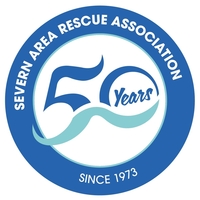Many thanks to
Gloucestershire County Council for capitally funding the camera's installation. Please click
here for flooding information regarding this location. In order to effectively monitor water levels and road conditions in the area prone to flooding, a strategically positioned Farson webcam is employed at the location where the A417 is affected. This webcam provides real-time surveillance, allowing for timely assessment and response to the changing conditions. Maisemore Bridge serves as a vital connection between the village and Alney Island, offering a vantage point for observing the Severn bore. Constructed around 1870, Maisemore Weir and Lock, positioned at the upper limit of tidal influence on the Severn, were once operational but are no longer in use.The area is susceptible to flooding, occasionally resulting in the closure of the A417 between Maisemore and Gloucester, particularly during the spring season when the swollen River Severn converges with high tides from the estuary. The name 'Maisemore' appears to have Welsh origins, signifying 'great field' (Welsh: maes mawr). The northern section of Alney Island, located within the parish of Maisemore, is referred to as Maisemore Ham, combining Welsh and Old English terms for field or meadow (ham meaning 'meadow').Initially, the village was centered around the church. However, in the 14th century, the current linear village was replanned and shifted further south, resulting in the separation of the church from its settlement. The construction of the present bridge began in 1939 but was interrupted by the events of the 1939-1945 war. It was eventually completed in 1956.The current bridge stands on or near the site of at least six previous bridges. The earliest recorded bridge, starting in approximately 1230, featured a cross with an inscription attributed to William Fitz Anketil. The subsequent known bridge was reportedly 'cut down' by royalist forces besieging Gloucester in 1643, suggesting it may have been a wooden structure. It was later reconstructed using timber.By ancient tradition, the parishioners of Maisemore were responsible for the bridge's maintenance. However, they faced financial difficulties, leading to a fine of £200 for non-repair in 1709. At the same time, the County Justices allocated £200 towards the construction of a sturdy brick and stone bridge. This bridge was destroyed by severe floods, and in 1777, trustees were appointed by an act of parliament to build a new bridge in place of a temporary wooden one located downstream. A new two-arch brick bridge, initiated by Thomas Badford in 1785, was funded through tolls imposed by the trustees until 1795.The trustees continued to oversee the bridge's maintenance until 1936 when their authority was transferred to the Gloucester County Council through an agreement. The previous bridge was demolished in 1939 to make room for the current structure, and a temporary timber bridge was erected to accommodate traffic from 1939 to 1956.Alney Island, situated within the River Severn, is characterized by the river splitting into two channels known as the East Channel and West Channel at Upper Parting, with a subsequent merging at Lower Parting further south. The island, an approximately 2.1-mile (3.4 km) long strip of land, is a local Nature Reserve.Primarily comprising low-lying farmland, Alney features three residential streets: Westend Parade, Westend Terrace, and Alney Terrace. Certain areas of the island are prone to flooding during periods of high water levels in the Severn. During the Summer 2007 United Kingdom floods, Castle Meads electrical substation on Alney was shut down due to flooding. In February 2014, Royal Marines and Army personnel were deployed to Alney Island in response to severe flooding.Telford's historic Over Bridge provides a pedestrian link between Alney and Over, crossing the West Channel. Modern road bridges carry the A40 and A417 trunk roads over the West Channel onto Alney, before crossing the East Channel to connect with Gloucester at the end of Westgate Street. Additionally, there are segregated bicycle paths in the vicinity of Alney. The original South Wales Railway, connecting Gloucester and Cardiff Central, also traverses Alney Island.






